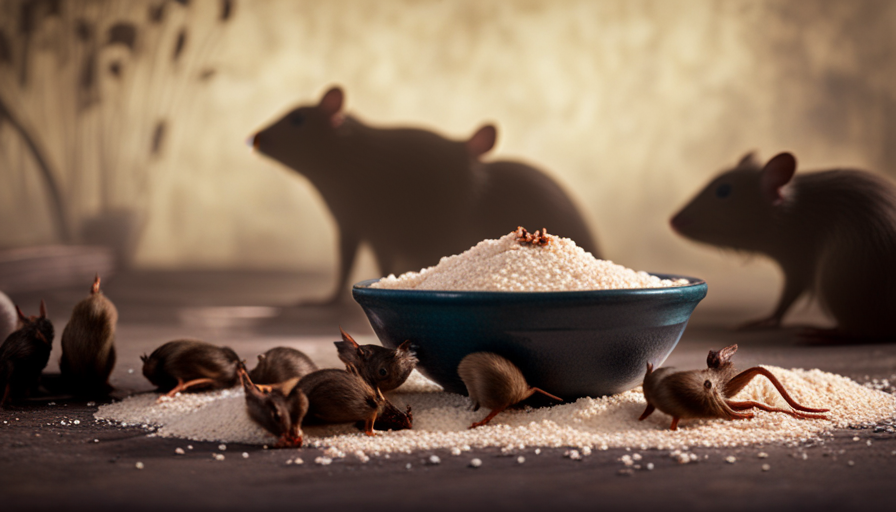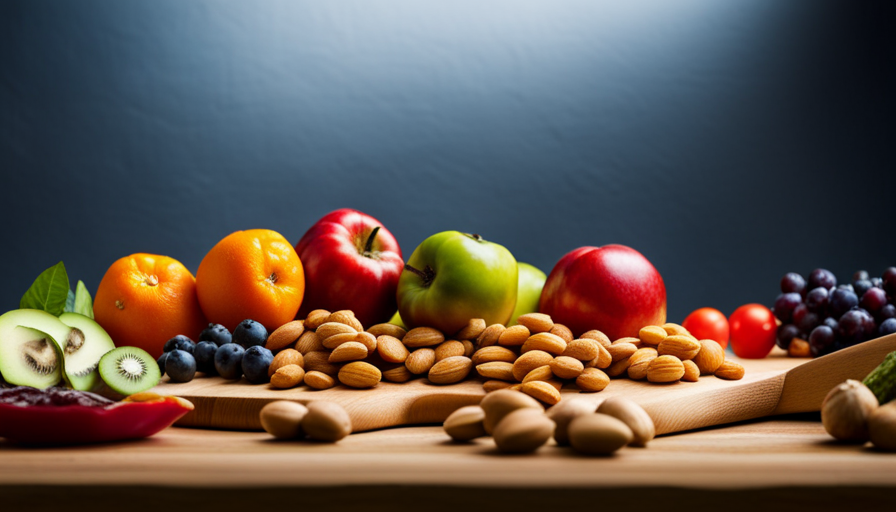Hello there! I am a certified nutritionist and today, I wanted to delve into the subject of raw food diets.
Now, many people are interested in these types of diets because they think it’s healthier than other options. But the truth is that raw food diets can actually be quite unhealthy for you!
In this article, I’ll explain why and provide some tips on how to eat healthily instead.
Raw food diets involve eating mostly uncooked or minimally cooked foods like fruits, vegetables, nuts, seeds, sprouted grains and legumes. While these foods can certainly have nutritional benefits when eaten in moderation, relying solely on them as part of your diet can be detrimental to your health.
For example, consuming an unbalanced amount of nutrients such as proteins, carbohydrates, fats and vitamins can lead to deficiencies over time if not properly monitored by a professional nutritionist.
So stay tuned to learn more about why raw food diets might not be right for you!
Nutrient Deficiencies
Eating a raw food diet may sound like the perfect way to enjoy healthy meals, but it could actually be detrimental to your health. Many people don’t realize that eating too many uncooked foods can lead to nutrient deficiencies and poor digestion.
Raw food diets are typically high in fat content, low in fiber, and lack essential vitamins and minerals for optimal nutrition. For example, consuming large amounts of raw nuts or avocados provides ample calories from fat but does not provide the necessary vitamins and minerals most individuals need on a daily basis.
Additionally, certain proteins such as beef or poultry must be cooked thoroughly to ensure proper digestion. Eating any type of meat without cooking it first can put you at risk for developing foodborne illnesses due to bacteria growth which is often difficult for our bodies to digest properly.
Without careful meal planning and supplementation, it’s easy to fall short on important nutrients while following a raw food diet plan – leaving you feeling lethargic and potentially compromising your overall health over time.
The poor digestibility of certain foods can also make them hard for our bodies to process correctly leading to gastrointestinal distress such as bloating, gas, constipation, or diarrhea.
Poor Digestibility Of Certain Foods
Having looked at the nutrient deficiencies associated with a raw food diet, let’s now consider another significant problem: poor digestibility of certain foods.
When consuming an overly-restrictive diet like this one, it becomes difficult to get adequate nutrition from all suitable ingredients and this can lead to even more serious health issues. Furthermore, there is the risk of food spoilage due to inadequate cooking temperatures which can result in digestive complications or worse.
Consuming raw animal proteins such as beef or poultry has been linked to multiple cases of foodborne illnesses caused by bacteria like E. coli and Salmonella. The same goes for dairy products, canned items that have not been heated up properly, unpasteurized juices and sprouts – all unsuitable ingredients that carry a high risk of causing food poisoning if consumed uncooked.
It’s also worth noting that many fresh fruits and vegetables contain parasites that must be cooked out before consumption.
Ultimately then, these problems can cause long-term damage to your digestive system leading to malabsorption syndrome and other unpleasant symptoms. Therefore it’s important to seek advice from a healthcare professional before making any decisions about adopting a raw food diet – particularly if you are pregnant or have existing medical conditions.
Risk Of Food Poisoning
I’m sure you’re aware of the risks of food poisoning, especially when consuming raw food.
Contamination by salmonella is one of the most common causes of food poisoning and can be avoided by avoiding raw food.
Raw food can also contain harmful bacteria and parasites, so it’s best to avoid it if you want to stay safe.
Eating raw food can be dangerous, so make sure you cook your food thoroughly to reduce the risk of salmonella and other food-borne illnesses.
Contamination
As a dietitian, I’m here to tell you that the raw food diet is not beneficial for your health.
One of the main risks with this type of eating is contamination from bacteria and other microbes in uncooked foods. This can lead to serious cases of food poisoning if cooked foods are not handled properly.
Cooking safety and food safety practices must be followed when preparing any kind of raw food. It’s important to maintain cleanliness throughout the entire process, from handling ingredients to storing them in a refrigerator or freezer.
As an example, if meat isn’t stored at the right temperature while defrosting, it can increase chances of bacterial growth which could cause severe illnesses upon ingestion.
In conclusion, consuming raw foods increases risk factors for potential contamination related illnesses so we need to exercise caution whenever possible.
Salmonella
In addition to the risks of contamination from raw foods, eating out can also increase your chances for food poisoning.
For example, if a restaurant or other eating establishment does not follow proper food preparation guidelines and use clean utensils to cook their food, there could be an increased risk of salmonella.
This is especially true if a restaurant is preparing uncooked items that have come in contact with raw meats.
Eating at restaurants where you are unable to see how they prepare the food should always be approached with caution.
When it comes to home-cooked meals, following safe cooking practices is essential to prevent any chance of contracting salmonella.
As I mentioned before, careful attention needs to be paid when defrosting meat so that bacteria doesn’t grow during this process.
It’s important to wash your hands after handling raw ingredients as well as making sure all surfaces and dishes used are properly cleaned afterward.
By practicing basic kitchen safety such as these tips, we can reduce our chances of getting sick from salmonella caused by contaminated foods.
Taking extra precautions while shopping for groceries and while preparing meals will help keep us healthy overall!
Lack Of Variety
According to the US Department of Agriculture, only 12% of Americans eat enough fruits and vegetables in a day. This is concerning since an abundance of vitamins and minerals are found in these foods that make up for over half of your daily nutrient intake.
The raw food diet doesn’t provide adequate amounts of essential nutrients, due to bioavailability issues with certain minerals not being absorbed from uncooked food sources. It can also be hard socially to stick with this type of diet as there may be pressures from family or friends who don’t understand why you choose not to cook your meals.
Here are 4 key reasons why the raw food diet isn’t recommended:
-
Nutrients like zinc, magnesium, iron, calcium and phosphorus aren’t easily absorbable without cooking them first.
-
Protein deficiencies can occur because many plant-based proteins require cooking so they’re more digestible by our bodies.
-
Vegetables can contain bacteria which need to be cooked out before eating them safely.
-
Eating mostly raw fruit and vegetables all the time can leave you feeling unsatisfied nutritionally as well as physically full but still hungry after meals because it’s harder for our bodies to break down uncooked fibrous materials than cooked ones.
Overall, following a strict raw food diet on its own doesn’t provide us with enough energy and nutrition while increasing risks for dangerous health outcomes if proper precautions aren’t taken when sourcing ingredients. Moving forward we will explore dehydration which often comes along with eating a majority raw plant based diet.
Dehydration
A raw food diet can leave you feeling dehydrated, which is a serious concern as dehydration can lead to fatigue and other dangerous health issues. Not consuming enough fluids places extra stress on the body and decreases its ability to effectively metabolize nutrients. This can result in excessive cravings for salt and sugar, mineral imbalances, dizziness and confusion due to electrolyte problems, headaches, constipation, dry skin, muscle cramps and increased thirst.
Dehydration also makes it more difficult for your body to flush out toxins through urine or sweat and potentially causes kidney stones because of inadequate fluid intake. Furthermore, not having enough water during meals may cause digestive distress due to lack of saliva production. Therefore drinking plenty of fluids throughout the day is important if you are following a raw food diet.
This dietary approach has one major drawback: high risk of food contamination from bacteria such as Salmonella or E-coli that thrive in uncooked products like eggs or unpasteurized milk. Eating these foods without proper heating could increase an individual’s chances of getting sick and developing long term side effects if contaminated with harmful pathogens.
As we transition into discussing this potential hazard next section, it’s important to consider how you will protect yourself when eating raw foods.
High Risk Of Food Contamination
Having discussed the risks associated with dehydration, it is important to consider the dangers of food contamination.
Consuming raw foods increases your risk of developing a foodborne illness due to potential sources of bacteria and parasites.
Raw food diets also require costly preparation and limited storage options as some fruits and vegetables are not suitable for freezing or canning.
Additionally, because they cannot be cooked, many vitamins and minerals will not be available from eating just raw foods.
It is essential that an individual who chooses to follow a raw diet plans their meals carefully so as not to miss out on essential vitamins and minerals that would otherwise be gained through cooking certain foods.
To ensure adequate nutrition when following this type of diet, an individual should consult a registered dietitian who can provide guidance for meal planning.
Avoiding cross-contamination when handling raw food is necessary.
Food borne illnesses are more common with these types of diets.
Lack Of Essential Vitamins And Minerals
I cannot stress enough how important it is to get the right balance of vitamins and minerals in your diet. A raw food diet can be unbalanced, leading to deficiencies in essential nutrients that are necessary for good health.
While you may hear conflicting advice on what constitutes a healthy diet, there’s no denying that some nutrient deficiencies can lead to serious health complications over time.
For example, if you don’t consume adequate amounts of calcium, vitamin D and phosphorus as part of a raw food diet then this could have an impact on bone health long-term. Iron deficiency is also common among people who follow a strict raw foods diet which can cause symptoms such as fatigue or more severe problems like anaemia.
In addition, thiamin (vitamin B1) levels tend to be lower than recommended intakes too. It’s vital for energy metabolism and its deficiency has been linked with poor mental function and other neurological conditions.
The lack of essential vitamins and minerals from following a raw food diet means it isn’t sustainable in the long term – something I think it’s important you’re aware of when considering whether this type of diet is suitable for you personally.
Unsustainable In The Long Term
Eating a raw food diet is not sustainable in the long term. For starters, it can be difficult to get adequate amounts of high quality proteins from unprocessed plant foods alone. Having an inadequate protein intake over time can lead to health risks such as muscle loss and impaired cognitive function.
Furthermore, buying organic or local produce for every meal can be quite expensive, making this type of eating unsustainable even if one had access to complete nutrient sources. Additionally, many vitamins and minerals found in fresh fruits and vegetables are lost during cooking processes so people on a raw food diet may miss out on important nutrients that they would otherwise obtain by having cooked meals.
People who don’t supplement their diets with fortified foods risk developing deficiencies which can have serious consequences on overall health. It’s also worth noting that there is limited research available on whether a completely uncooked diet provides all the essential nutrients needed for optimal health.
Without enough research-backed evidence, we cannot confidently say that eating solely raw food is safe or beneficial without further investigation into its nutritional benefits and potential drawbacks. Moving forward, let’s discuss the possible risks of malnutrition associated with following a raw food diet.
Risk Of Malnutrition
Eating a raw food diet is like running in quicksand: it may seem easy at first, but the further you go, the harder it becomes.
The limited variety of foods available on a raw food diet can lead to malnutrition. Without cooked grains and legumes, for example, there is little opportunity for getting important vitamins and minerals that are only found in cooked starches or plant proteins.
Additionally, because most raw vegetables and fruits need to be peeled or chopped before being eaten, they often lack essential fiber which helps keep us full throughout the day.
Without adequate nutrition from nutrient-dense sources such as fortified cereals, dairy products or fish, individuals on this type of diet risk losing muscle mass instead of fat when trying to lose weight.
If left unaddressed over time, these deficiencies can lead to serious health issues including anemia, fatigue and weakened immune systems. Even more concerning is that if certain nutrients aren’t absorbed properly due to digestion problems caused by low fiber intake – it could have long-term implications for our overall health.
The potential consequences of not eating enough fresh produce can quickly outweigh any short-term benefits associated with this type of diet – especially if one isn’t mindful about meeting their nutritional needs.
It’s important to understand what risks come along with following a restrictive way of eating so we can make informed decisions about how best to nourish ourselves for life-long vitality.
Transitioning now into exploring the risk of excessive weight loss…
Risk Of Excessive Weight Loss
When considering the raw food diet, it is important to understand how this can lead to excessive weight loss. Many people who switch over to a raw food diet have unrealistic expectations of what their new lifestyle will look like and how quickly they will see results. This can often lead to extreme calorie restriction which can be dangerous for overall health.
Additionally, some individuals may not realize that while on a strict raw food diet they are neglecting key nutrients and vitamins needed in order to maintain healthy body functions.
Here are 4 ways the raw food diet can result in excessive weight loss:
- Unmonitored levels of caloric intake
- Low fiber content leading to feelings of hunger more frequently
- Lack of essential vitamins and minerals necessary for proper bodily functioning
- Not enough variety in meals resulting in nutrient deficiencies
The consequences of these issues could potentially cause serious harm if one does not take into account the need for balance when following this eating plan. Without careful monitoring, an individual may find themselves dealing with severe malnutrition or even worse – significant vitamin toxicity due to an excess consumption of certain types of foods within this dietary approach such as green leafy vegetables high in Vitamin A .
As we move forward, let’s explore the risks associated with having too much Vitamin A in your system from consuming a raw food diet…
Risk Of Vitamin A Toxicity
Moving on from the risk of excessive weight loss, one should also be aware of the potential for vitamin A toxicity when following a raw food diet.
Vitamin A is an important nutrient that helps maintain healthy eyesight, bones and skin; however, too much can create long term health risks.
Excessive supplementation through a raw food diet can lead to liver damage and even death in some cases. It’s not uncommon for those who practice this type of dietary lifestyle to consume more than the daily recommended allowance due to their focus on plant-based foods like fruits, vegetables and nuts which all contain high levels of vitamins such as A.
When it comes to any dietary regimen, moderation is key – especially with something as sensitive as vitamin A. Too little or too much could have serious consequences down the line so it’s important to discuss your current eating habits with a registered dietitian if you are considering making any major changes. They will help determine what level of supplementation may be appropriate for you based on other contributing factors such as age, gender and activity level.
Given its potency, special attention must be given when incorporating vitamin A into your meal plan – whether via natural sources or supplements.
Always consult with a healthcare professional before starting anything new so they can properly assess your needs and provide guidance accordingly.
With that said, let’s turn our attention now towards examining another common issue associated with a raw food diet: risk of food allergies.
Risk Of Food Allergies
The raw food diet is a huge risk to your health. It’s almost like playing Russian roulette with what you put into your body – you never know when it will come back and bite you!
Not only does this type of eating present an array of potential risks, but there are also major environmental impacts that cannot be ignored.
One significant risk associated with the raw food diet has to do with unsafe preparation techniques. Eating unpasteurized or contaminated foods can cause serious infections from bacteria such as E. coli and Salmonella. Additionally, undercooked meats can contain parasites that can lead to further health problems down the line if left untreated.
In addition, consuming large amounts of uncooked vegetables may increase one’s risk of developing food allergies due to their high fiber content causing irritation in some people’s digestive systems.
Though some claim that raw diets provide benefits such as increased energy levels and better digestion, these claims remain largely unsubstantiated by research studies.
Moreover, it is important to consider the environmental impact that comes along with following a vegan-based raw food diet through its reliance on fruits and veggies grown conventionally instead of organically. This could potentially expose individuals to higher concentrations of toxins from pesticides used in non-organic farming practices which may have adverse effects on overall health over time.
Risk Of Nutrient Loss
One of the main risks associated with a raw food diet is nutrient loss due to improper storage. Raw fruits, vegetables, and other plant-based foods are especially vulnerable to damage from light, heat, oxygen exposure, or pests if not stored correctly. This can lead to significant losses in vitamin content as well as carotenoids and phenolic compounds that are important for health.
Even if these foods have been frozen or canned prior to consumption, processing them diminishes their nutritional value. For those eating a raw food diet it’s important to be aware of how long produce has been sitting on the shelf before purchase and consider buying organic whenever possible since pesticides can reduce nutrient content. Additionally, it’s essential to store all fresh items promptly in the refrigerator or freezer at home so they don’t spoil quickly and become unsafe for consumption.
When done incorrectly, following a raw food diet could also result in inadequate calorie intake which may eventually cause malnutrition. To ensure adequate nutrition while consuming mostly raw vegetables and fruit, people need to make sure that they vary their diets regularly by including protein sources such as nuts and seeds as well as unprocessed grains like quinoa and wild rice.
Transitioning into this type of lifestyle requires careful planning and education about proper food safety techniques and necessary portion sizes for overall health benefits.
Inadequate Calorie Intake
It’s easy to be seduced by the idea of a raw food diet. Eating fresh, unprocessed foods that haven’t been cooked sounds like an ideal way to eat healthy and stay fit – but it comes with its own set of risks.
The lack of nutrient diversity can lead to severe cravings for more varied meals, as well as poor absorption of vital nutrients due to missing out on certain cooking techniques.
Inadequate calorie intake is another concern when following a raw food diet. Because many vegetables are low in calories, simply eating enough food can be difficult and leave you feeling tired or hungry throughout the day. You may also find yourself over-indulging in higher calorie snacks such as nuts or dried fruits which don’t provide adequate nutrition.
This reliance on high fat and dense foods can cause weight gain if not monitored carefully.
Raw diets often restrict major food groups including dairy, grains and legumes which are essential sources of protein, fiber, vitamins and minerals needed for our bodies to function optimally. Without taking proper supplements or planning adequate meal plans it’s easy to fall into nutritional deficiencies – especially those sensitive to particular dietary needs such as vegans or vegetarians who have limited options available from plants alone.
Moving onto the next section about risk of food addiction…
Risk Of Food Addiction
Eating a raw food diet may sound like the perfect way to get all the nutrients your body needs. Unfortunately, it can also be detrimental to your health if you’re not careful. Eating too much raw food can result in an imbalance of nutrition and overeating risks.
I recommend that people who are interested in trying out this type of diet should first consult with a registered dietitian or medical professional about their individual dietary needs.
Here are five key points for anyone considering following a raw food diet:
- Make sure to eat enough calories – not eating enough can lead to serious health problems.
- Balance your meals with proteins, carbohydrates, fats, vitamins and minerals from both plant-based and animal sources.
- Include plenty of fruits and vegetables in your daily intake as they provide essential vitamins, minerals and fiber.
- Avoid processed foods such as refined sugar and white flour products which contain unhealthy ingredients like trans fat.
- Monitor how often you consume high calorie foods like nuts, seeds and avocados so that you don’t exceed recommended amounts for your size and activity level.
If done properly, following a raw food diet is safe due to its focus on whole unprocessed foods but it’s important to remember that there are potential risks associated with any new lifestyle change—especially when it comes to nutrition!
Frequently Asked Questions
What Foods Should I Avoid On A Raw Food Diet?
Despite the many dieting myths out there, a raw food diet can be beneficial if done right!
It’s important to pay attention to what foods you should avoid while on this type of diet.
Foods that require cooking such as eggs, dairy products and grains are not part of this diet since they need to be heated at higher temperatures than 115°F in order to make them safe for consumption.
Additionally, processed foods and any containing added sugar or salt should also be avoided when following a raw food diet.
To ensure your safety and best results, it’s always recommended to consult with a registered dietitian before starting this type of diet.
What Are The Benefits Of A Raw Food Diet?
A raw food diet can offer a variety of benefits and is worth considering if you’re looking to increase your intake of fresh, nutrient-rich foods. Planning ahead for meals and snacks with raw ingredients will help ensure that you are consuming enough nutrients without the risk of any added fats or processed sugars.
Additionally, some studies have shown that eating more raw fruits and vegetables may reduce inflammation in the body and decrease health risks such as heart disease. However, it’s important to note that those on a strict vegan diet should pay extra attention to their vitamin B12 levels since this essential nutrient does not occur naturally in plant sources.
How Long Should I Stay On A Raw Food Diet?
Sticking to a raw food diet can have many benefits, but it’s important to know when enough is enough.
Generally speaking, a registered dietitian would recommend staying on the raw food plan for no more than three months at a time in order to get all of the essential nutrients needed.
The key to success lies in finding creative cooking methods and portion sizes that work best for you while still keeping your meals balanced and nutritious.
What Are The Recommended Daily Intakes Of Vitamins And Minerals On A Raw Food Diet?
When it comes to a raw food diet, meeting your daily recommended intakes of vitamins and minerals can be challenging.
While some sources are available in raw fruits and vegetables such as vitamin C, other essential nutrients require different methods for sourcing.
Vitamin D deficiency is particularly common on a raw food diet because the primary source of this nutrient — sunlight — is not always easily accessible.
To ensure adequate intake of all necessary vitamins and minerals, individuals should supplement their diets with fortified foods like plant-based milks or nutritional yeast that have been enriched with B12 and other micronutrients.
Additionally, consulting with a nutrition professional will help create an individualized plan specific to one’s needs.
Are There Any Safe Alternatives To A Raw Food Diet?
When it comes to eating a healthy diet, there are plenty of safe alternatives to a raw food diet. In fact, according to the Harvard Health Publishing 2019 report, 80% of Americans don’t get enough fruits and vegetables in their diets!
Instead of relying solely on raw ingredients, you can incorporate cooked foods into your meals by using various cooking techniques such as steaming or stir-frying. Doing so will help increase nutrient availability and absorption while still providing health benefits due to the presence of antioxidants and other beneficial compounds found in plant-based foods.
As an RDN (Registered Dietitian Nutritionist), I recommend reducing your intake of processed foods and preparing more whole food dishes with balanced amounts of proteins, carbohydrates, and fats for optimal nutrition.
Does a Raw Food Diet Contribute to Feelings of Anger and Irritability?
Some people believe that a raw food diet can lead to increased feelings of anger and irritability. However, scientific evidence on raw food anger causes is limited. It’s essential to consider individual factors and consult with a healthcare professional before making any dietary changes.
Conclusion
At the end of the day, it’s important to remember that a raw food diet can be dangerous and potentially unhealthy if not done correctly.
For example, one case study showed that an individual who had been following a strict raw vegan diet for 5 years was deficient in both iron and vitamin B12. This resulted in fatigue, headaches, and difficulty concentrating on tasks.
While there are potential benefits associated with eating mostly raw foods, it is important to consult with a registered dietitian before committing to this way of life.
Registered dietitians have extensive knowledge about nutrition and will be able to provide you with personalized advice tailored to your lifestyle and health goals.










